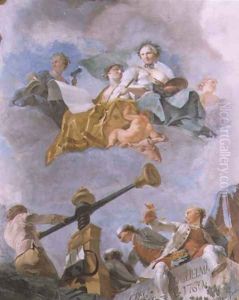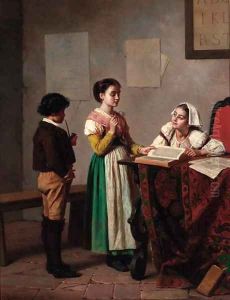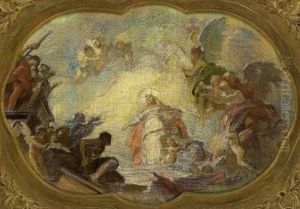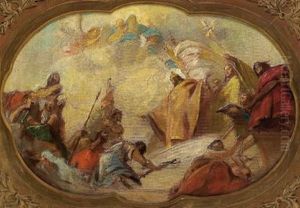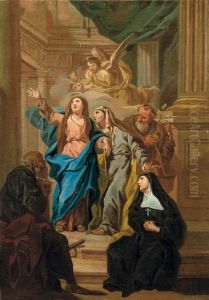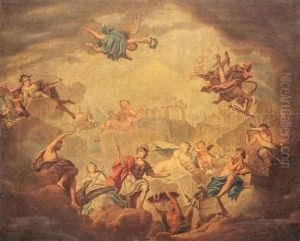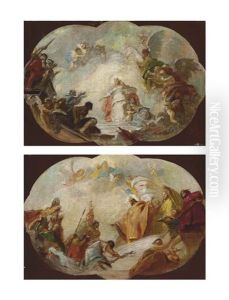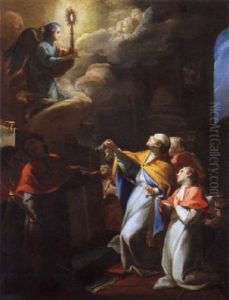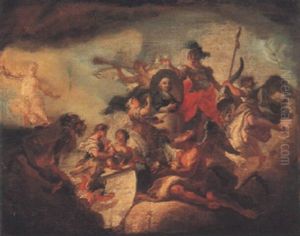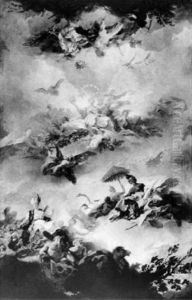Gregorio Guglielmi Paintings
Gregorio Guglielmi was an 18th-century Italian painter, known primarily for his work in the Rococo style. Born in 1714 in Rome, Italy, Guglielmi showed artistic promise at an early age. He received his initial training from his father, Pietro Guglielmi, who was a decorative painter himself. Gregorio then further honed his skills at the Accademia di San Luca in Rome, where he was influenced by the works of prominent Baroque artists.
Guglielmi's early work was characterized by its dynamic compositions and vibrant use of color, which drew from the Baroque tradition. However, as his style evolved, he became a leading proponent of the Rococo movement in Italy. He was particularly known for his fresco painting, a technique that involves applying water-based pigments to freshly applied plaster, allowing the colors to become an integral part of the wall's surface.
In the 1740s, Guglielmi's reputation grew, and he began to receive commissions from various churches and noble families. His work during this period included both religious subjects and mythological scenes, often imbued with a sense of lightness and elegance typical of Rococo aesthetics.
By the 1750s, Guglielmi's career had reached its zenith, and he was sought after by patrons across Europe. He traveled extensively, working in various cities, including Dresden, where he was appointed as a court painter. His international experience further enriched his style, which incorporated various regional influences into his work.
Guglielmi's success continued until his death in 1773. Throughout his career, he had a significant impact on the development of Rococo painting in Italy and beyond. His works were celebrated for their imaginative compositions and the skillful integration of architecture and decoration. Following his death, his influence persisted, with his style being studied and emulated by subsequent generations of artists.
